Nothing lasts forever, and though some art forms last longer than others, like statues and sculptures from thousands of years ago remain relatively untouched, there are art forms that last but mere minutes or hours. Land Art is a genre of art that spans both the most ephemeral and the long lasting. One of the most notable land artists of the current time is Andy Goldsworthy, who continues to create stunning site-specific eco-art with materials from the place itself.
A native of Great Britain, Andy Goldsworthy gravitated towards working with natural materials, and had a proclivity towards art as well. At a young age, Goldsworthy worked on a farm which certainly gave him a respect and understanding of the natural world. Later in the mid 70’s, he underwent formal training at art school, but Goldsworthy’s love of the natural world took him outside of the art studio and into site-specific installations. Some of his early work involved dry-fitting stones together to create small structures and designs. He quickly expanded into using any materials that were available to him in the area that he was working. Pebbles, leaves, sticks, snow, ice, etc., are just a few of the natural supplies he uses in his work.
Due to the organic nature of many of his artworks, they are ephemeral, and last for only as long as the natural degradation process takes for each material. Snow may melt in a few minutes or hours, while his artworks made of stone may last for generations.
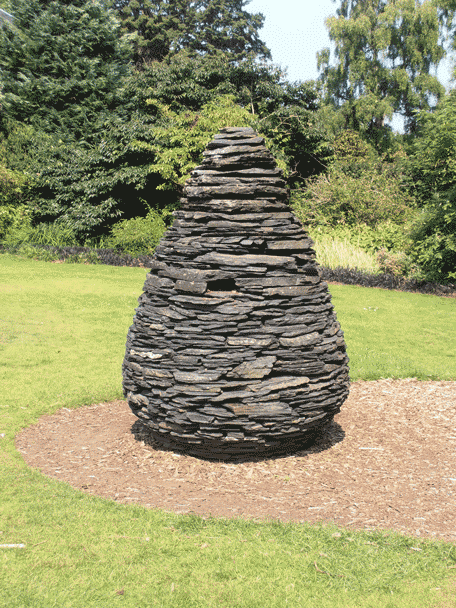
While none of his artworks are technically permanent, his piece Cone will likely stand the test of time. Not only is it made of carefully stacked stone, it resides in the Royal Botanic Gardens in Edinburgh, and thus benefits from human security and protection. This piece is one of a handful located around the world, and was built to last, unlike most of his work. Another secret of this piece is the sturdy steel plates that are layered between the slate. Rock and stone are certainly some of Goldsworthy’s favored materials, appearing in many of his works, especially those displayed at museums and galleries.
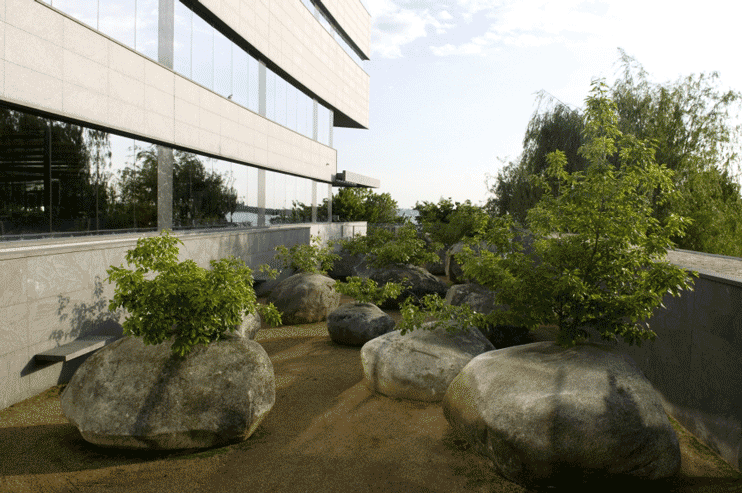
The 2003 installation Garden of Stones was created as a memorial for Holucaust survivors, and permanently resides at the Museum of Jewish Heritage in New York City. Large boulders were placed in the courtyard, and small oak tree saplings were planted within hollowed out cavities at the top of each boulder. This piece is an interesting take on ephemerality; while it is meant to withstand the test of time, it changes every day and continues to grow. The Garden of Stones is one of his more interactive works, as it is meant to be nurtured and grown for generations to come.
While he has built large site specific pieces from stone, Goldsworthy also works on a smaller scale with river stones and pebbles. For these pieces, Goldsworthy either finds rocks that have been cracked or cracks them himself, and arranges them to create stunning images using negative space, or arranges them by color for an aesthetically pleasing piece.
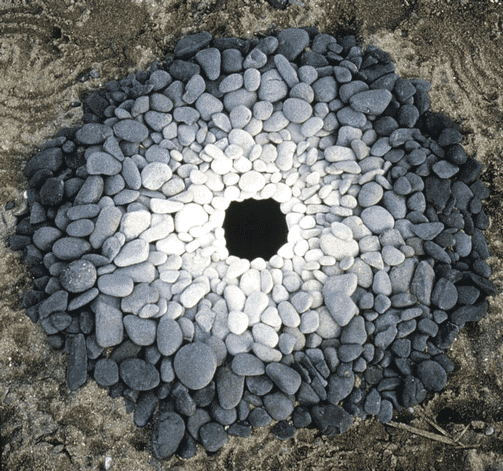
Along the same lines, though far more delicate and temporary, Andy Goldsworthy uses similar methods to create art with leaves, twigs and branches. Some of his most effective works occur in the autumn, when he has access to brightly colored leaves in golds, oranges, reds, etc and can carefully place each leaf, through this layering, he creates otherworldly effects. By lining the base of a tree with concentric rings of leaves, it appears to almost spring out of a glowing hole.
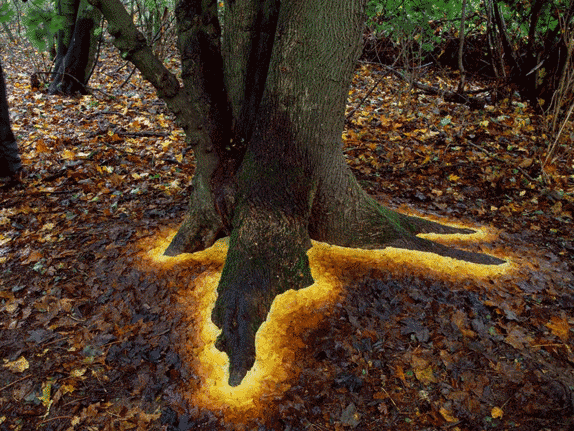
Goldsworthy’s use of available materials creates surprising yet impactful pieces. For example, fallen petals from red poppies (due to a heavy rain) were used to create this gorgeous line of red ascending steps in Spain.
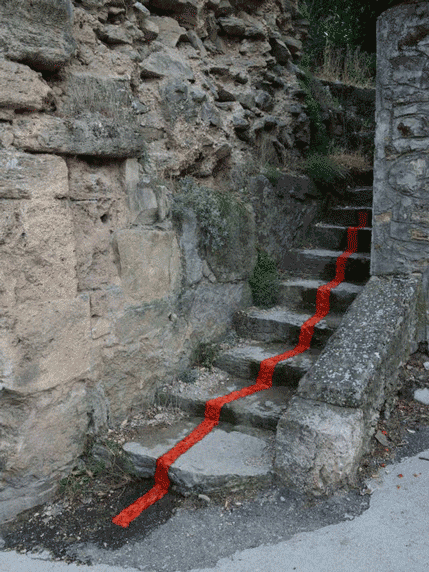
What could be more ephemeral than petals and leaves but snow and ice. During the winter, Goldsworthy creates delicate pieces using icicles, snowballs, and whatever else may be around at the time. By breaking icicles, licking the ends, and sticking them back together, he creates gravity defying sculptures that bend the mind and test the limits of the structural integrity of ice. Shards of ice get repurposed into spiky balls, snow and twigs become modular blocks that almost look like they come from a Cubist painting. In order to create such beautiful wintry sculptures, he must brave freezing temperatures for hours just for them to melt in the sun faster than he created them.
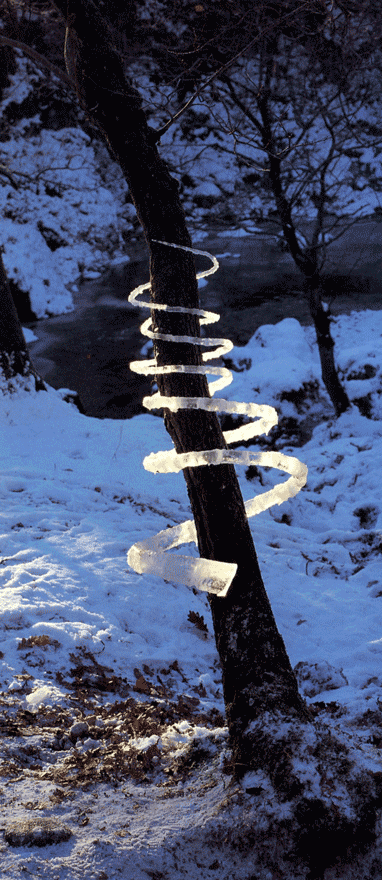
Much of Andy Goldsworthy’s work aims to bring nature into the spotlight, and remind people of the natural beauty of the world around them. In 2000, he worked on making the message more obvious with the Midsummer Snowballs. Over a few months in the Winter, he gathered 13 one-ton snowballs (filled with twigs, fur, leaves, etc) and then in June, placed them in the city of Edinburgh. As they melted, the snowballs released their contents, and helped to remind city-dwellers of the country life.
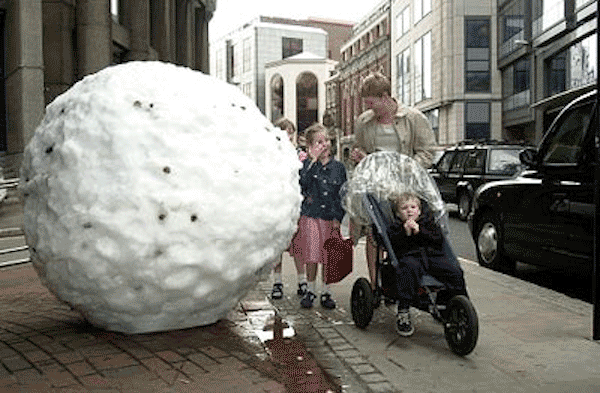
What makes these pieces so effective is that while they have been arranged by hand, all of the materials collected are from the natural site, making the art a natural extension of the environment. It distorts the reality of organic form with the aid of the artist’s eye. The art also calls into question the idea of permanence. For some of these works, if Goldsworthy hadn’t photographed them for documentation, no one but him would even know they existed. This style of art shows the importance of living in the moment and appreciating the beauty of the natural world.
